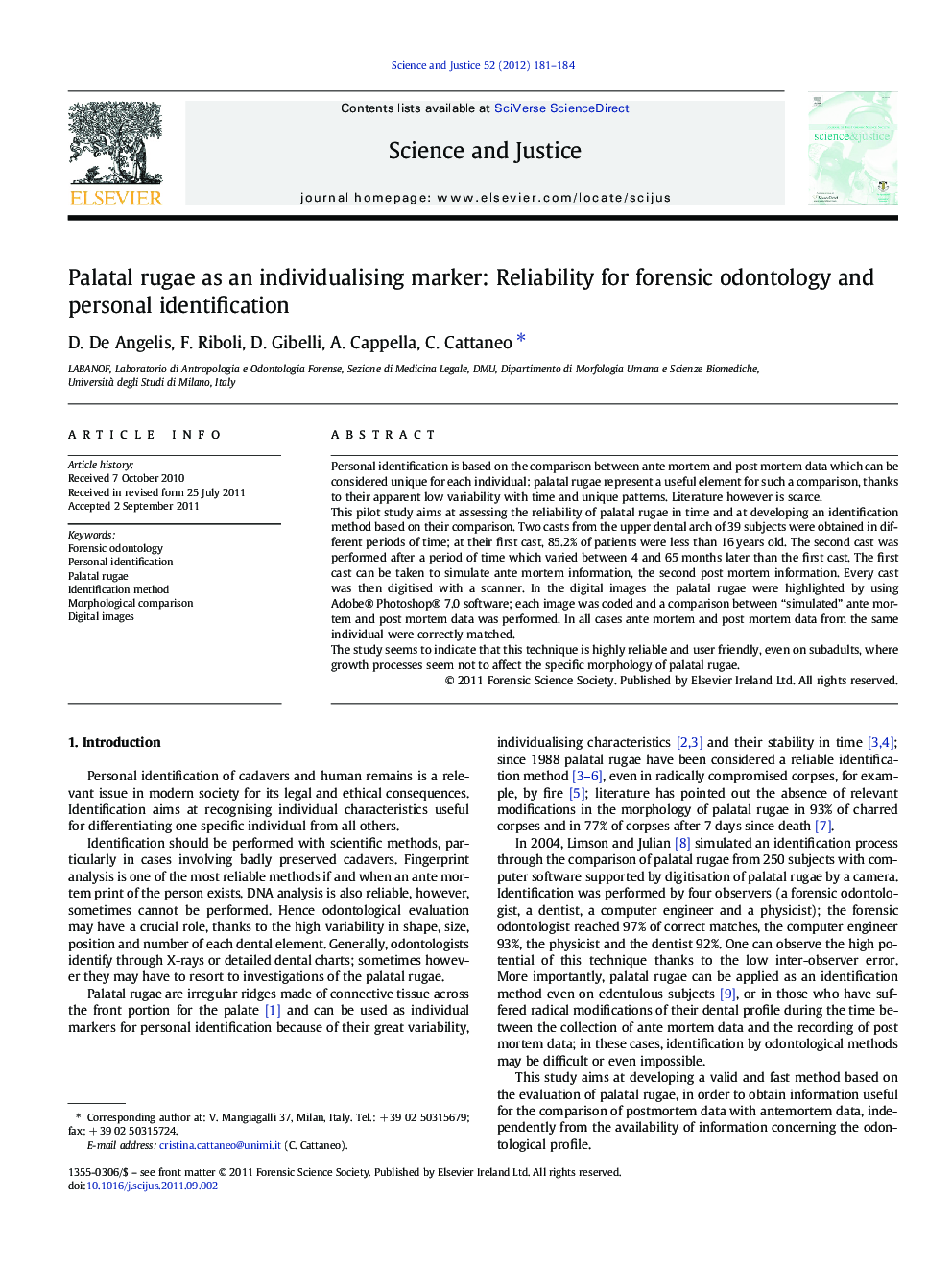| Article ID | Journal | Published Year | Pages | File Type |
|---|---|---|---|---|
| 107024 | Science & Justice | 2012 | 4 Pages |
Personal identification is based on the comparison between ante mortem and post mortem data which can be considered unique for each individual: palatal rugae represent a useful element for such a comparison, thanks to their apparent low variability with time and unique patterns. Literature however is scarce.This pilot study aims at assessing the reliability of palatal rugae in time and at developing an identification method based on their comparison. Two casts from the upper dental arch of 39 subjects were obtained in different periods of time; at their first cast, 85.2% of patients were less than 16 years old. The second cast was performed after a period of time which varied between 4 and 65 months later than the first cast. The first cast can be taken to simulate ante mortem information, the second post mortem information. Every cast was then digitised with a scanner. In the digital images the palatal rugae were highlighted by using Adobe® Photoshop® 7.0 software; each image was coded and a comparison between “simulated” ante mortem and post mortem data was performed. In all cases ante mortem and post mortem data from the same individual were correctly matched.The study seems to indicate that this technique is highly reliable and user friendly, even on subadults, where growth processes seem not to affect the specific morphology of palatal rugae.
